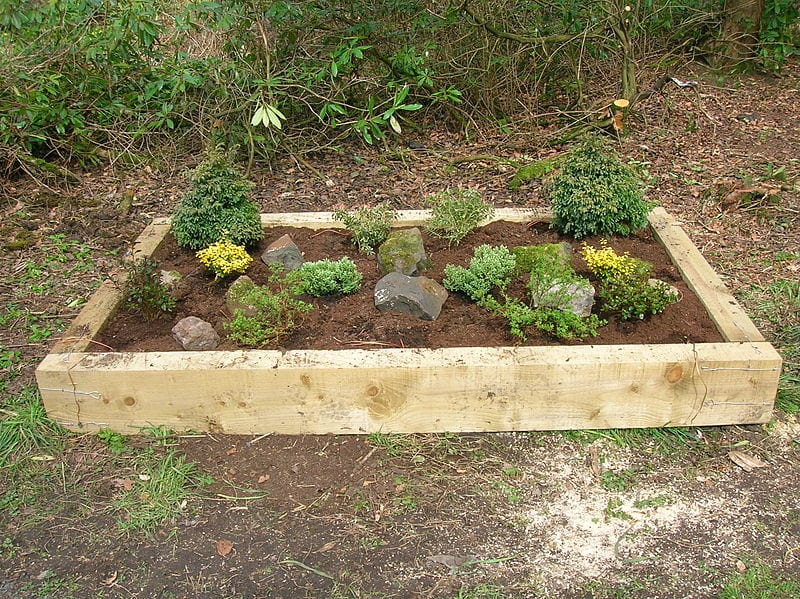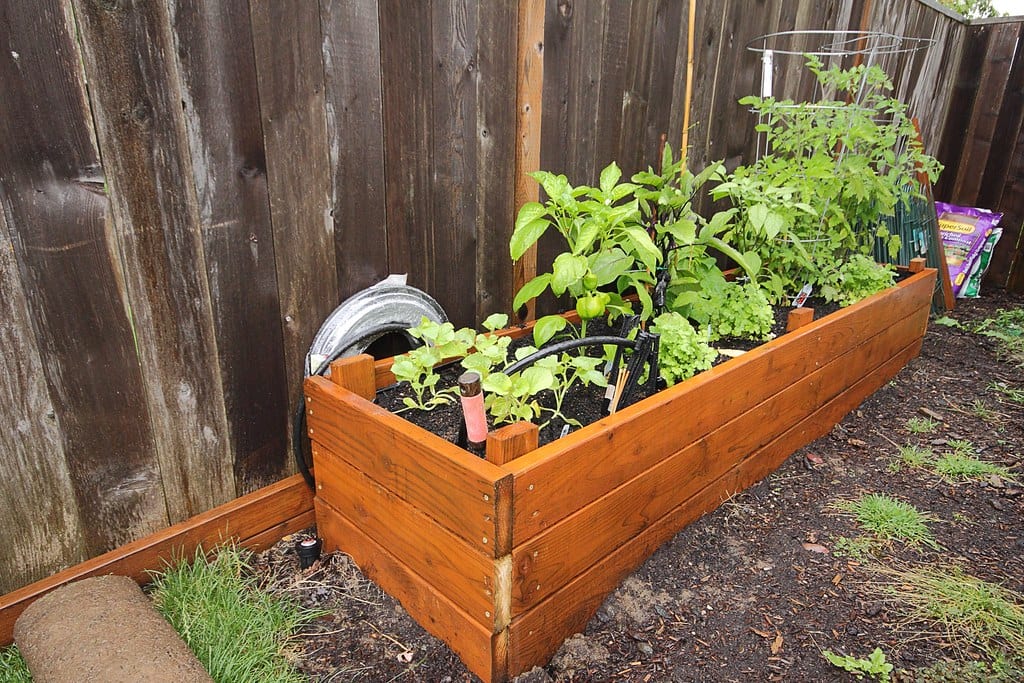
Raised garden beds, also known as garden boxes, are a type of gardening structure that elevates the planting area above the ground level. They are typically made from various materials like wood, metal, or stone and are designed to contain soil within a confined space. Raised garden beds have gained popularity among gardeners because they offer several benefits:
- Improved soil drainage: Raised beds allow for better drainage, which can help prevent waterlogged plants and root rot.
- Easier soil amendments: It’s simpler to add and control the soil mixture in a raised bed, allowing gardeners to create the perfect environment for their plants.
- Reduced soil compaction: Since gardeners don’t walk on the soil in raised beds, it remains less compacted, improving root growth and overall plant health.
- Accessibility: Raised beds can be built at different heights, making them more accessible to gardeners with mobility issues or those who prefer not to bend down.
- Pest control: Raised beds can help deter some pests, such as slugs and snails, by creating a barrier between the ground and the plants. They can also make it easier to add netting or fencing to protect plants from larger animals.
- Extended growing season: The soil in raised beds tends to warm up faster in the spring, allowing for earlier planting and a longer growing season.
- Aesthetic appeal: Raised beds can be an attractive addition to a garden, offering a clean, organized appearance and the opportunity for creative design.
- Weed management: Separating the garden bed from the surrounding soil can help minimize weed growth, making maintenance easier.
Overall, raised garden beds are a practical and versatile option for gardeners looking to improve their growing conditions and make gardening more enjoyable.

How to Build a Simple Wooden Raised Garden Bed
Building a raised garden bed is a relatively simple project that can be completed in a few steps. Here’s a basic guide to help you get started:
Materials you’ll need:
- Untreated wood, stone, concrete blocks, or metal (for the frame)
- Wood screws or brackets (for wood frames)
- Drill or screwdriver
- Saw (if you need to cut wood)
- Level
- Landscape fabric or cardboard (optional)
- Soil mix (compost, topsoil, and other amendments as needed)
- Plants or seeds
Step-by-step guide:
- Choose a location: Select a level, well-draining area that receives the appropriate amount of sunlight for the plants you intend to grow. Make sure the location has easy access to water.
- Determine the size: Decide on the dimensions of your raised bed, considering both the space available and the types of plants you’ll be growing. Common sizes are 4×4, 4×8, or 4×12 feet. The width should be no more than 4 feet, allowing you to easily reach the center of the bed from either side.
- Select the material: Choose the material for your raised bed frame. Untreated wood (such as cedar or redwood) is a popular choice due to its natural resistance to rot and insects. Other options include stone, concrete blocks, or metal.
- Build the frame: Cut the material to the desired length and assemble the frame using screws, brackets, or other appropriate fasteners. For a wooden frame, you can use wood screws and a drill or screwdriver to connect the corners. Ensure that the frame is square and level.
- Prepare the ground: Remove any grass, weeds, or rocks from the area where you’ll place the raised bed. You can lay down landscape fabric or cardboard to help suppress weeds, but make sure to leave openings for water drainage.
- Position the frame: Place the frame in the prepared area, ensuring that it’s level and secure. If necessary, adjust the ground underneath the frame to achieve a level surface.
- Fill the bed: Add a mix of high-quality soil and compost to fill the raised bed. You may also need to add other amendments, depending on the specific needs of your plants. Fill the bed to about 1-2 inches below the top edge of the frame.
- Plant your garden: Plant your seeds or seedlings according to their specific requirements for spacing, depth, and care. Water the bed thoroughly after planting to help settle the soil.
- Maintain your garden: Regularly water, weed, and fertilize your raised garden bed as needed to ensure optimal plant growth.
Remember that building a raised garden bed is a customizable project, so you can adjust the design, materials, and size to suit your needs and preferences.
Filling a Raised Garden Bed
Protect against pests by lining the bottom of the bed with weed block, newspaper, cardboard or landscape fabric. Fill your beds with the best soil possible. For most applications, a good basic mix is made from 60-percent topsoil, 30-percent compost and 10-percent potting mix. Add enough soil mix to fill the bed. Some settling will occur. And beware of adding anything to your beds that may contain weed seeds or herbicide chemicals.
Raised Bed Gardening Triumphs Over Poor Soil Conditions
Raised bed gardening is the key to success when it comes to having healthy, thriving plants. It takes care of your soil problems and you can even use a raised bed for growing flowers and vegetables! A successful gardener should consider this method if they live in an area that has poor quality dirt-especially ones with sandy soils or heavy clay soils.
What’s the best way to garden? With raised beds! They’re so much easier than digging up dirt and planting your seeds or seedlings, plus they make a beautiful display. Whether you have an acre of land that needs attention or just one little plot in shades salad bowl type area – this is perfect for all sorts o’ spaces (and pockets too).
The ability to manage the soil is one of the most significant benefits of using the raised bed. Because you choose and mix the ground yourself, you can create the perfect soil environment for the plants you want to grow. That means even if you’re going to grow plants that don’t typically thrive in your area because of your local soil composition, you can grow them in raised planters in which you have created the perfect soil for those plants. The benefits of using raised beds extend beyond just the soil environment. Raised bed gardening allows you to create your own mix for perfect plant growth, even if local conditions don’t typically support that type or variety!
There are other benefits to raised areas as well, even if the soil is not an issue in your area. Another significant advantage to consider is the way the raised beds let you target the use of things you put on your garden. Apply fertilizer and mulch where they are needed – and there only – so you end up using less and do not accidentally apply these things where they are not required. If you use chemical pesticides, herbicides or insecticides, you can use a smaller amount of them, and again, you can target their use. Because you apply them only to the raised bed, you don’t have to worry about runoff or the effects these chemicals can have on your pets or kids who play in your yard. All in raised bed gardening makes for more efficient planting.
One great benefit of a raised gardening bed that is the fact that the planting area is, in fact, elevated. Since the garden is not ground level, it is much easier to tend. Garden enthusiasts with back problems will love being able to see their plants and manage them without bending over and dealing with hours of painful work. Raised areas are ideal for people with joint pain and injuries that make it difficult for them to garden traditionally.
Although raised garden beds have all of these benefits and make different kinds of gardening possible in areas where the soil is not ideal, the beds can’t trump every problem a garden may face. You still need to consider the climate in your area and choose plants accordingly – raised planters or not, and tropical plants won’t grow in snowy climates. Also, you will still need to pay attention to what level of sunlight your garden area gets and choose your plants with that in mind. Further, although most people with raised beds deal with less pest infestation, you will still need some way to deal plant-munching insects. Even though raised beds can’t fix everything, however, they are still a great option when soil limits the way you garden.
Final 3 Tips For Building a Raised Bed Garden
Raised bed gardening is a fun, creative, and efficient way to garden. If you are just getting started with this type of gardening, here are a couple tips to get you going in the right direction.
Tip #1 – To Purchase a Kit or Not?
There are many ready made kits on the market now to make building your bed quick, easy, and affordable. If you choose this route, do some research as some will vary in quality and features, not to mention in ease of assembly.
Tip #2 – Building Your Own
If you decide to build your own bed be sure you know the weight of the bed you intend to build once it has soil in it. The bigger the bed, the heavier it is with soil, and the more reinforcement you will need. If need be rebar can be placed at angles to the bed once assembled to give it side support, this is important in larger beds.
Tips #3 – Consider Size
When trying to decide what size to make your raised bed, be sure to consider what types of vegetables you will be planting. A 12 inch raised bed is sufficient for most root vegetables, lettuce and other leafy greens need even less space.
Raised bed gardening can be a great way to create a garden when space is limited. It is a fun, efficient, and easy to maintain way to exercise your green thumb. Hopefully these couple of tips will get you started on your own garden today.
